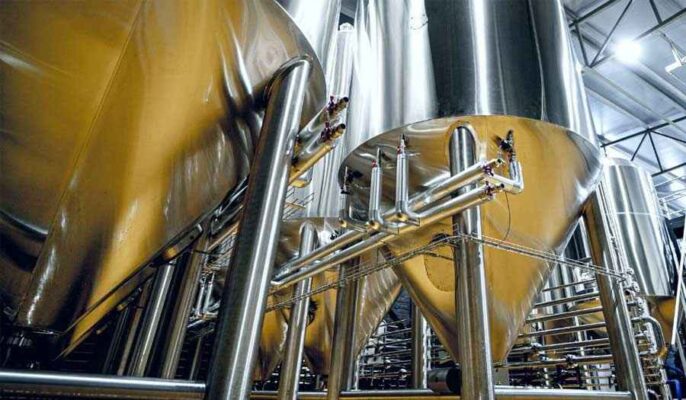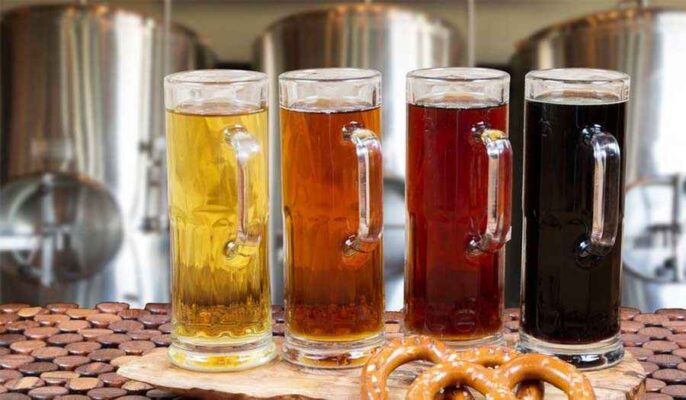Beer fermentation tanks play a vital role in the brewing process, especially in ensuring the quality of craft beer. These specialty tanks have unique features and functions that help enhance the flavor, aroma and freshness of your beer.
Fermenting wort into beer may be considered easy, but it can often be challenging. Adding dry yeast to wort is very simple these days. With his knowledge and experience, the master brewer handles pushing the yeast in the right direction to produce the beer of your dreams. With a few simple tweaks, the results of wort fermentation into a premium beer can be improved.
Start with a good brewing recipe
Brewing recipe design is a fascinating mix of art and science. While some brewers use a scientific method to try and match grain percentage, specific gravity, color and bitterness, that’s only part of the brewing process. Another part is understanding the flavors each ingredient produces and how those flavors interact in complex ways and determine the character of the finished beer. You need to master the art and science of brewing to produce the best beer possible.

Consistency in the brewing process
Consistency in the brewing process is very important, especially if you want to improve upon a previous brewing recipe. You’ll need to keep track of each brew, measure simple data like volume, gravity, and temperature, and compare brew batches of the same recipe.
Once you have a solid starting brew recipe, the next step is to brew it. The goal here isn’t to complete the brew recipe in one go but to use your best skills to brew it, analyze it, and improve upon the beer when it doesn’t quite do what you want.
Main ways to improve fermentation
Use proper pitch velocity
Brewers generally agree that yeast can be used at rates lower than recommended. Using the correct pitch rate is a key lever for the brewer to steer the yeast in the right direction.
Using a low pitching rate can lead to some undesirable consequences. First, the chances of slow and long fermentations are increased. Also, long-term fermentation will produce some off-flavors. List two: diacetyl and acetaldehyde (green apple smell) are the two main off-flavors.
Learn about oxygen management
Brewer’s yeast top fermentation or bottom fermentation can use energy and basic English elements to synthesize most of the key components. But, some essential molecules can only be produced when the yeast has access to oxygen. These compounds include ergosterol and unsaturated fatty acids. They are essential molecules to ensure the fluidity and permeability of yeast membranes. Due to the deficiency, it is difficult for the yeast to grow and import other essential molecules, resulting in insufficient growth and incomplete fermentation.
Optimize temperature management
Temperature plays an important role in the fermentation process. Besides to fermentation efficiency, it is also important to consider the impact of temperature management on the final beer. Regardless of any aromatic character, all yeasts ferment better at the higher end of their working temperature range.
- For ales (top fermentation), the ideal temperature in most cases is between 20 and 24 °C. Below 20°C there is a risk of prolonged fermentation. Above 24 ℃ will produce H2S and other peculiar smell.
- For most beers and pilsners (bottom fermentation), a temperature of 11-14 °C is recommended.
Ultimate Attenuation Test
Even with the same recipe, the clear degree of fermentation (ADF) can vary from fermentation to fermentation. There may be several reasons for this variation, including raw material characteristics, saccharification process map, fermentation management and yeast viability. One very useful way to determine whether changes are due to saccharification or fermentation management is through limiting decay (LA).
When ADF is lower than usual and there is a 0.2°P difference between AE and LA, the pre-fermentation process (raw material and saccharification) should be checked.
When there is a significant difference (e.g., 0.5°P) between AE and LA, the fermentation process should be checked.

How fermenters improve craft beer quality
Optimal Carbonation Control
Beer fermenters allow brewers to control the level of carbonation in their beer. By maintaining consistent pressure and temperature, these tanks help achieve the perfect balance of carbonation for a smoother, more enjoyable drinking experience.
Improve clarity and deposit control
Beer fermenters often have features such as built-in filtration systems and conical bottoms. These features aid in the clarification process, removing unwanted sediment and ensuring that the beer is crystal clear and appealing.
Efficient Dispensing
Beer fermentation tanks are designed for efficient and hygienic dispensing. They include components such as dedicated service lines, taps, and valves to cut exposure to air and maintain the integrity of the beer during pouring. This streamlined dispensing process ensures consistent quality from the first glass to the last.
Customizable
Beer fermentation tanks offer a range of customizable options, allowing brewers to tailor the design and functionality of the tank to their specific needs. From size and capacity to more accessories, brewers can create a serving tank that complements their unique brewing process and enhances the quality of their craft beer.
Beer fermentation tanks are indispensable to improve the quality of craft beer. To improve your brewery operations, consider investing in high-quality fermenters. Micet Group provides a variety of customized fermenters and top technical support, welcome your inquiry!




